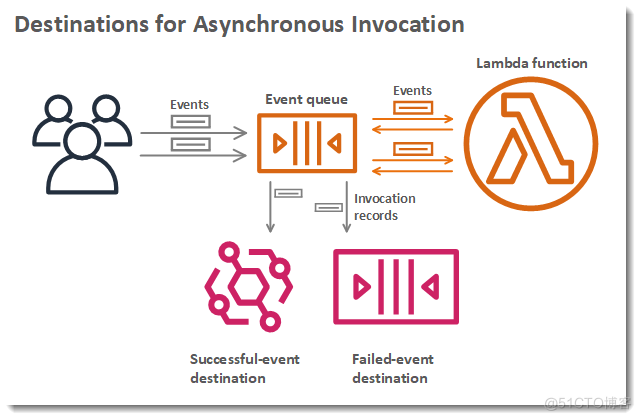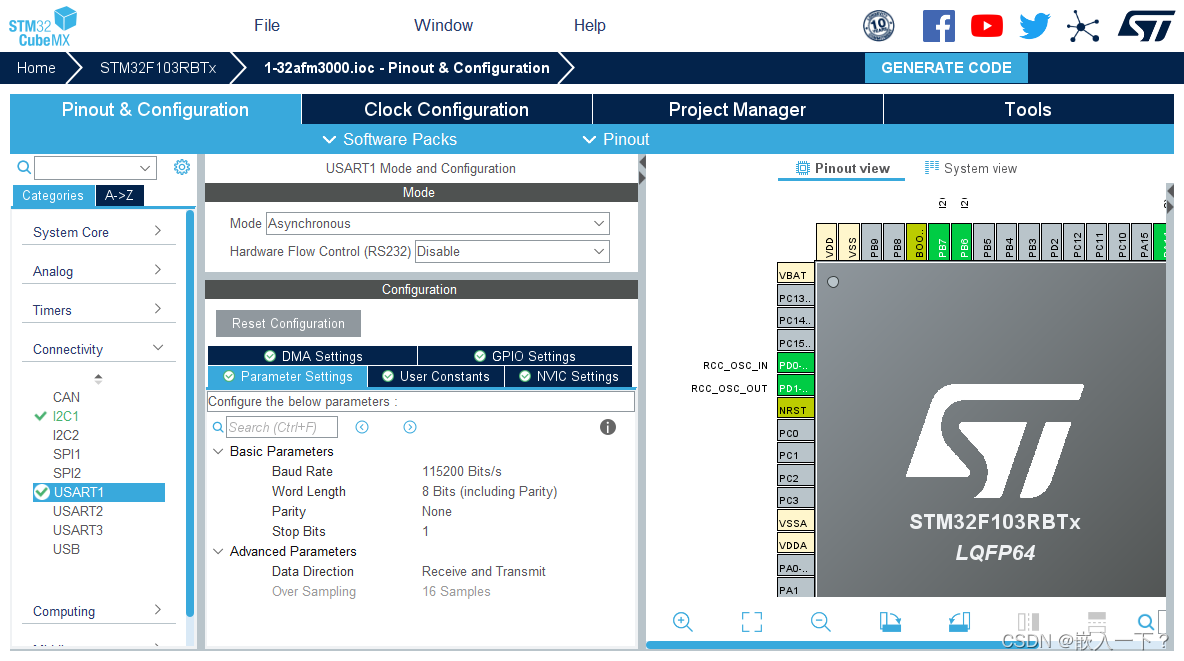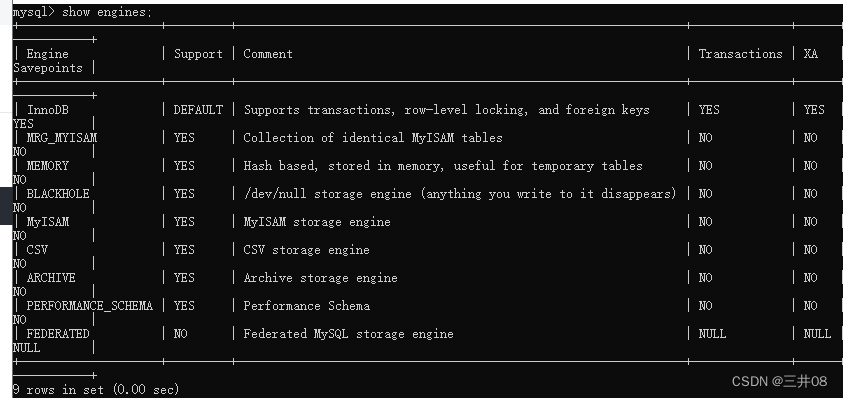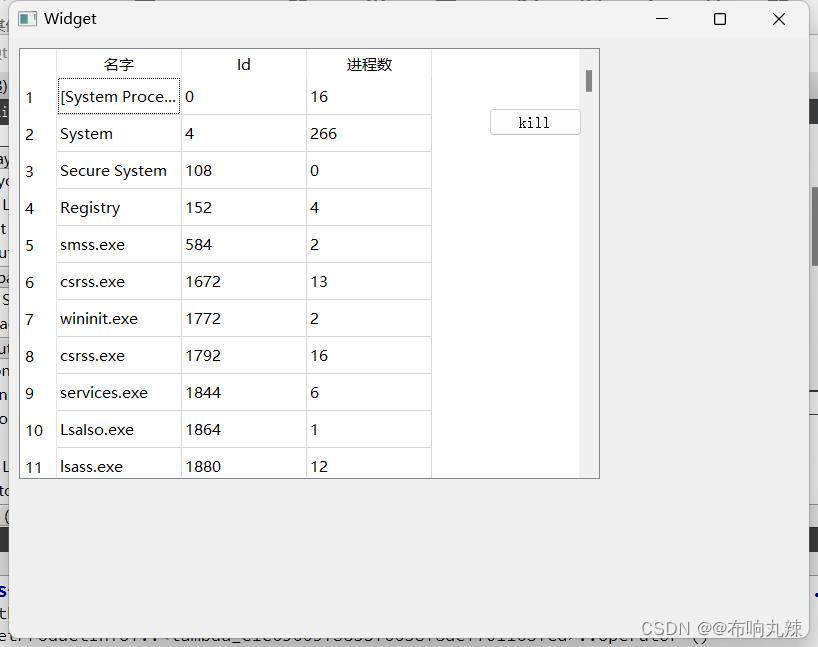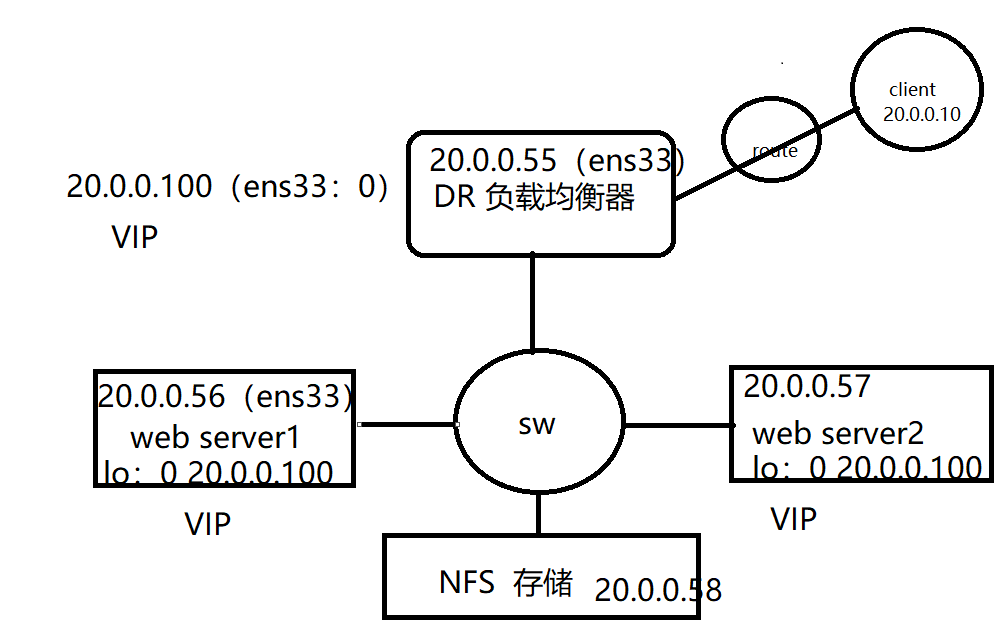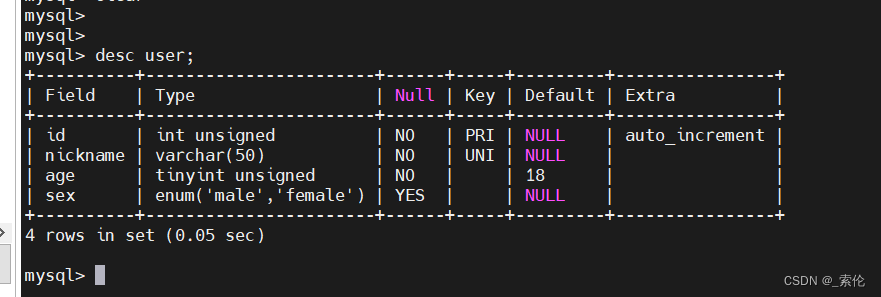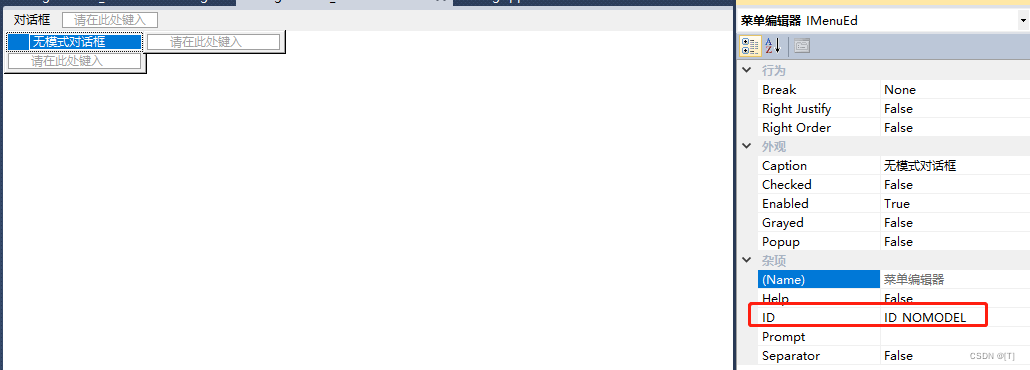当前位置:网站首页>深度学习100例 —— 卷积神经网络(CNN)天气识别
深度学习100例 —— 卷积神经网络(CNN)天气识别
2022-08-04 10:32:00 【Ding Jiaxiong】
活动地址:CSDN21天学习挑战赛
深度学习100例——卷积神经网络(CNN)天气识别
我的环境
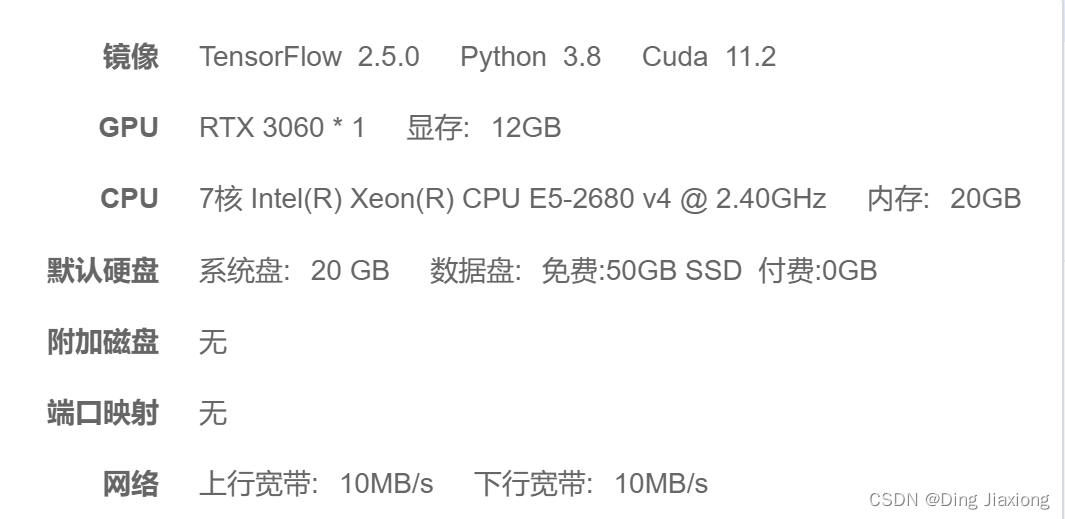
1. 前期准备工作
1.1 设置GPU
import tensorflow as tf
gpus = tf.config.list_physical_devices("GPU") # tf.config.list_physical_devices# 获得当前主机上某种特定运算设备类型(如 GPU 或 CPU )的列表
if gpus:
gpu0 = gpus[0] #如果有多个GPU,仅使用第0个GPU
tf.config.experimental.set_memory_growth(gpu0, True) #设置GPU显存用量按需使用
tf.config.set_visible_devices([gpu0],"GPU") # 设置可见设备列表
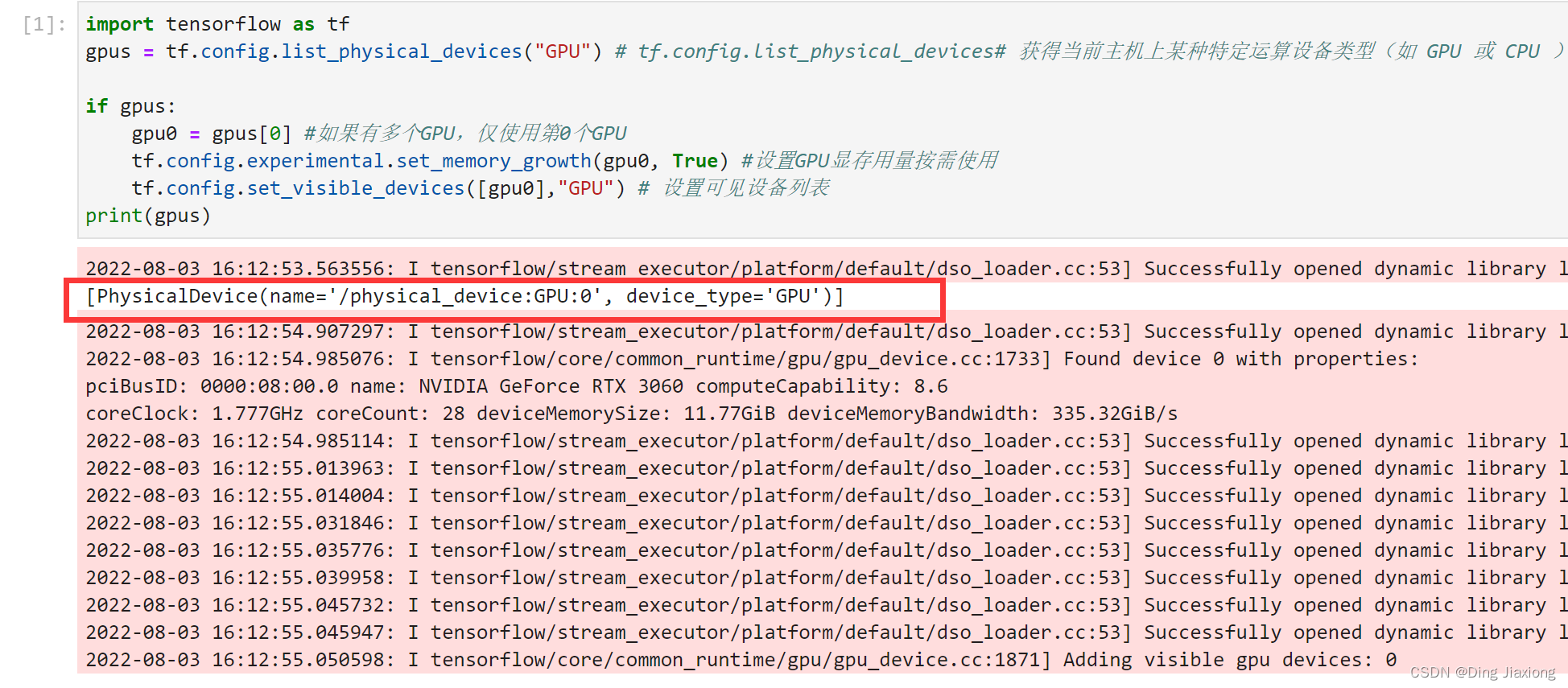
1.2 导入数据
import matplotlib.pyplot as plt
import os,PIL
# 设置随机种子尽可能使结果可以重现
import numpy as np
np.random.seed(1)
# 设置随机种子尽可能使结果可以重现
import tensorflow as tf
tf.random.set_seed(1)
from tensorflow import keras
from tensorflow.keras import layers,models
import pathlib
1.3 查看数据
数据集中一共有cloudy、rain、shine、sunrise四类。
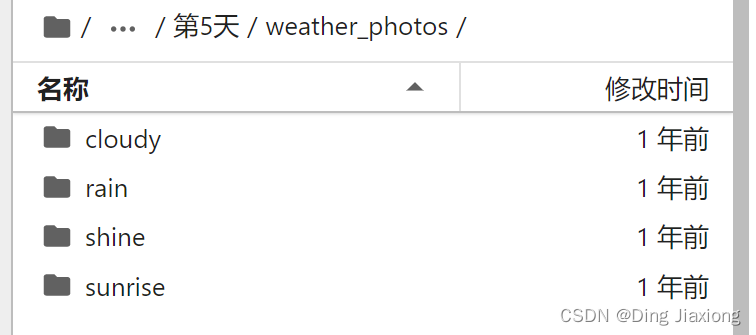
设置数据集路径及查看图片
data_dir = "第5天/weather_photos/"
data_dir = pathlib.Path(data_dir)
image_count = len(list(data_dir.glob('*/*.jpg')))
print("图片总数为:",image_count)

查看sunrise的第一张图片
roses = list(data_dir.glob('sunrise/*.jpg'))
PIL.Image.open(str(roses[0]))
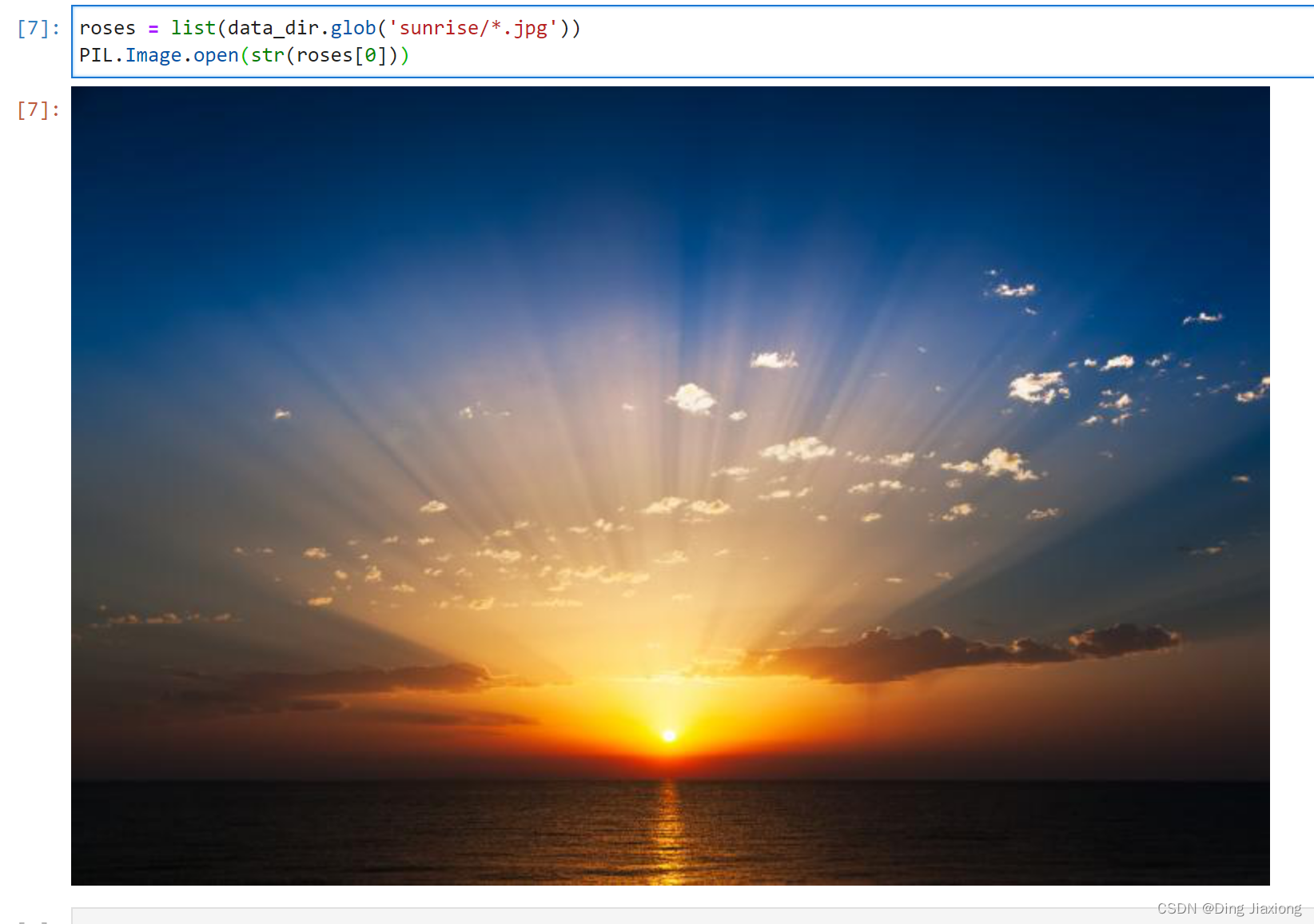
2. 数据预处理
2.1 加载数据
使用image dataset_from directory方法将磁盘中的数据加载到tf.data.Dataset中
batch_size = 32 # 用于控制数据批次的大小,默认32
img_height = 180 # 图片像素高度
img_width = 180 # 图片像素宽度
train_ds = tf.keras.preprocessing.image_dataset_from_directory(
data_dir, # 数据所在目录
validation_split=0.2, # 0到1之间的可选浮点数,可保留一部分数据用于验证
subset="training", # training或validation之一
seed=123, # 用于shuffle和转换的可选随机种子
image_size=(img_height, img_width), # 从磁盘读取数据后将其重新调整大小,默认256x256
batch_size=batch_size) # 数据批次的大小

同样的设置验证数据集。
val_ds = tf.keras.preprocessing.image_dataset_from_directory(
data_dir,
validation_split=0.2,
subset="validation",
seed=123,
image_size=(img_height, img_width),
batch_size=batch_size)
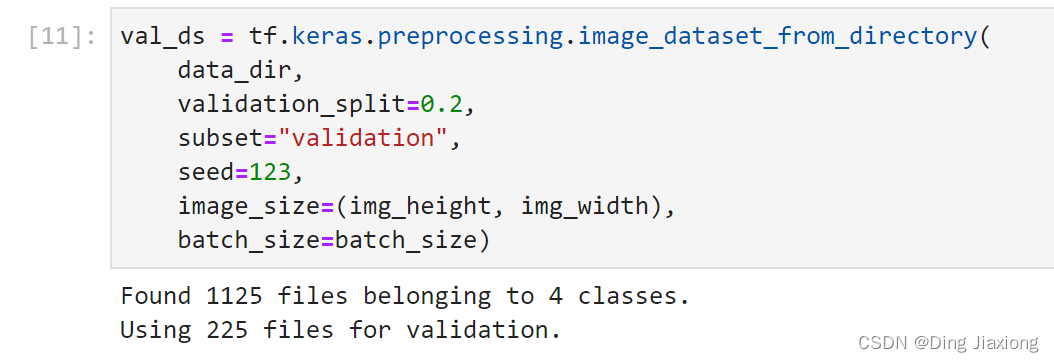
通过class_names输出数据集的标签,标签将按字母顺序对应于目录名称。
class_names = train_ds.class_names
print(class_names)

2.2 可视化数据
plt.figure(figsize=(20, 10))
for images, labels in train_ds.take(1):
for i in range(20):
ax = plt.subplot(5, 10, i + 1)
plt.imshow(images[i].numpy().astype("uint8"))
plt.title(class_names[labels[i]])
plt.axis("off")
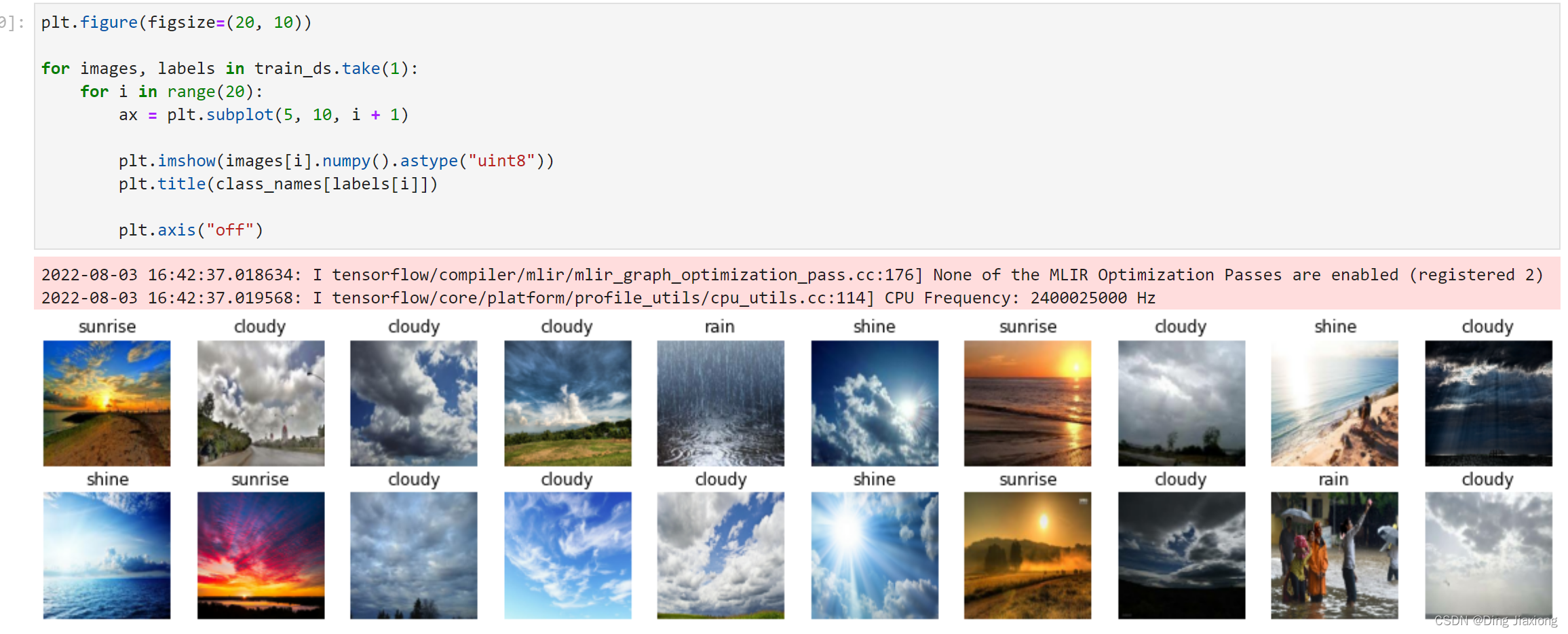
2.3 检查数据
for image_batch, labels_batch in train_ds:
print(image_batch.shape)
print(labels_batch.shape)
break
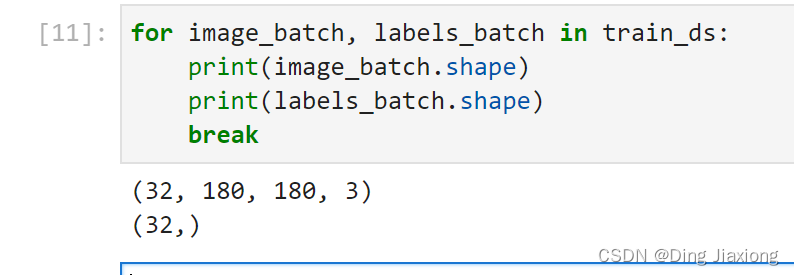
- image_batch是形状的张量(32 , 180 , 180 ,3)。3通道的180x180,32张图
- labels_batch是(32 , ) , 对应32张图片
2.4 配置数据集
shuffle():打乱数据
prefetch():预取数据,加速运行
CPU正在准备数据时,加速器处于空闲状态。相反,当加速器正在训练模型时,CPU处于空闲状态。因此,训练所用的时间是CPU预处理时间和加速器训练时间的总和。prefetch()将训练步骤的预处理和模型执行过程重叠到一起。当加速器正在执行第N个训练步时,CPU正在准备第N+1步的数据。这样做不仅可以最大限度地缩短训练的单步用时〈(而不是总用时),而且可以缩短提取和转换数据所需的时间。如果不使用prefetch( ),CPU和GPU/TPU在大部分时间都处于空闲状态:

使用prefetch()可以显著减少空闲时间:

cache():将数据集缓存到内存当中,加速运行
AUTOTUNE = tf.data.AUTOTUNE
train_ds = train_ds.cache().shuffle(1000).prefetch(buffer_size=AUTOTUNE)
val_ds = val_ds.cache().prefetch(buffer_size=AUTOTUNE)
3. 构建CNN网络
num_classes = 4
model = models.Sequential([
layers.experimental.preprocessing.Rescaling(1./255, input_shape=(img_height, img_width, 3)),
layers.Conv2D(16, (3, 3), activation='relu', input_shape=(img_height, img_width, 3)), # 卷积层1,卷积核3*3
layers.AveragePooling2D((2, 2)), # 池化层1,2*2采样
layers.Conv2D(32, (3, 3), activation='relu'), # 卷积层2,卷积核3*3
layers.AveragePooling2D((2, 2)), # 池化层2,2*2采样
layers.Conv2D(64, (3, 3), activation='relu'), # 卷积层3,卷积核3*3
layers.Dropout(0.3),
layers.Flatten(), # Flatten层,连接卷积层与全连接层
layers.Dense(128, activation='relu'), # 全连接层,特征进一步提取
layers.Dense(num_classes) # 输出层,输出预期结果
])
model.summary() # 打印网络结构
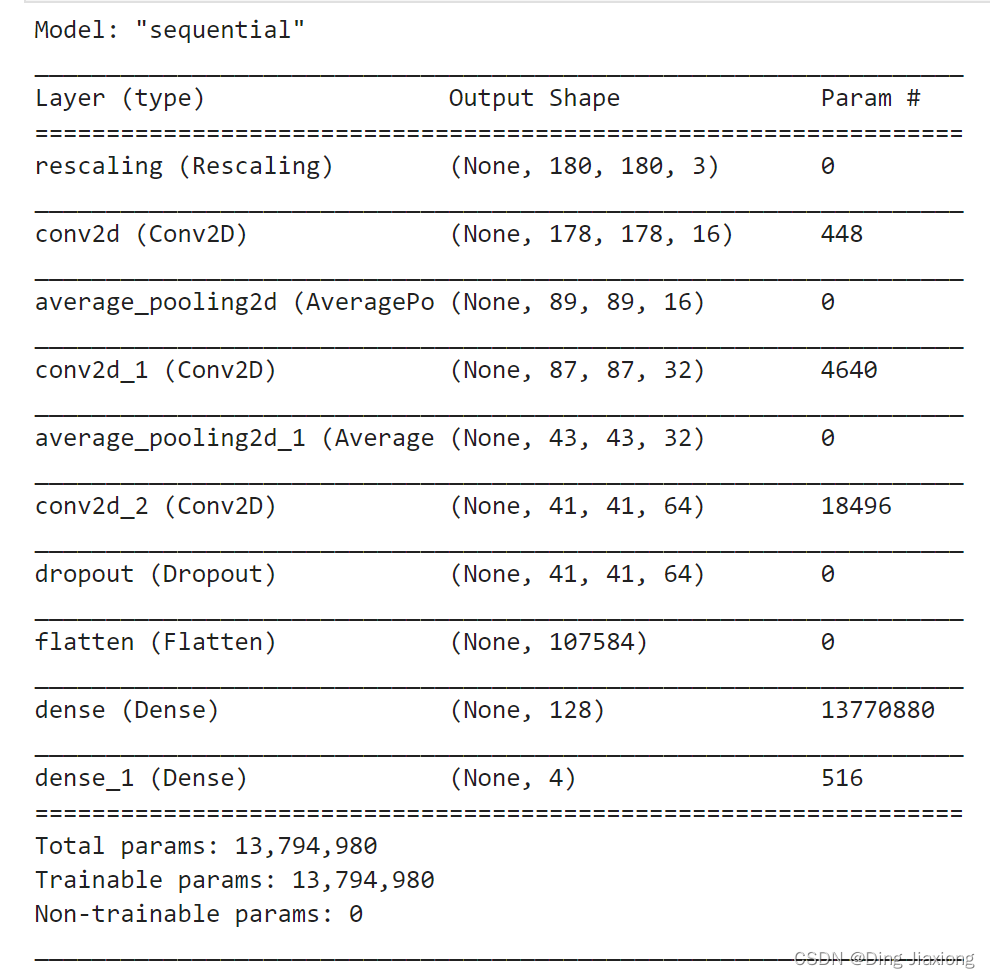
4. 编译模型
- 损失函数loss:用于衡量模型在训练期间的准确率
- 优化器optimizer:决定模型如何根据其看到的数据和自身的损失函数进行更新。
- 指标metrics:用于监控训练和测试步骤。
# 设置优化器
opt = tf.keras.optimizers.Adam(learning_rate=0.001)
model.compile(optimizer=opt,loss=tf.keras.losses.SparseCategoricalCrossentropy(from_logits=True),metrics=['accuracy'])
5. 训练模型
epochs = 10
history = model.fit(train_ds,validation_data=val_ds,epochs=epochs)
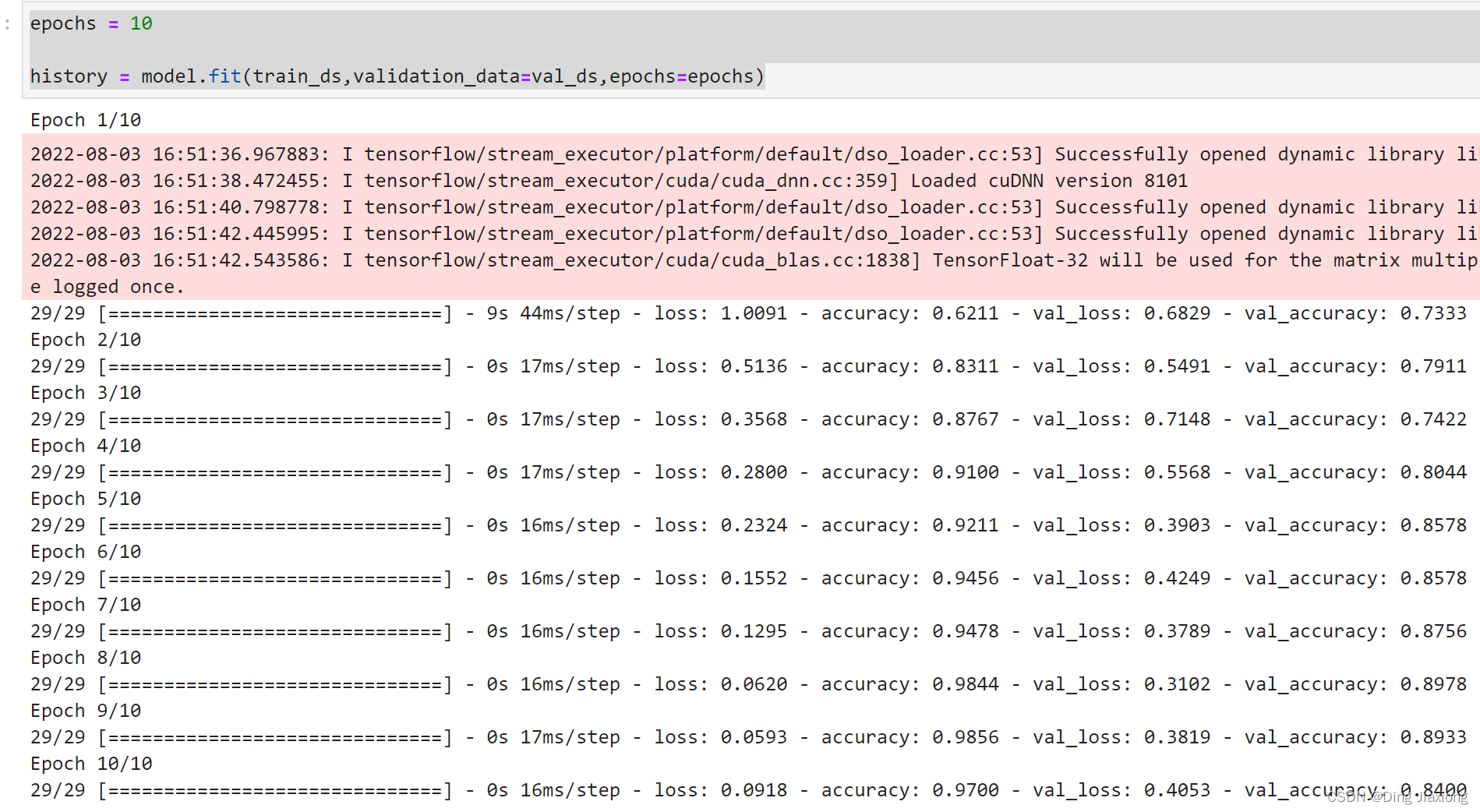
6. 模型评估
acc = history.history['accuracy']
val_acc = history.history['val_accuracy']
loss = history.history['loss']
val_loss = history.history['val_loss']
epochs_range = range(epochs)
plt.figure(figsize=(12, 4))
plt.subplot(1, 2, 1)
plt.plot(epochs_range, acc, label='Training Accuracy')
plt.plot(epochs_range, val_acc, label='Validation Accuracy')
plt.legend(loc='lower right')
plt.title('Training and Validation Accuracy')
plt.subplot(1, 2, 2)
plt.plot(epochs_range, loss, label='Training Loss')
plt.plot(epochs_range, val_loss, label='Validation Loss')
plt.legend(loc='upper right')
plt.title('Training and Validation Loss')
plt.show()
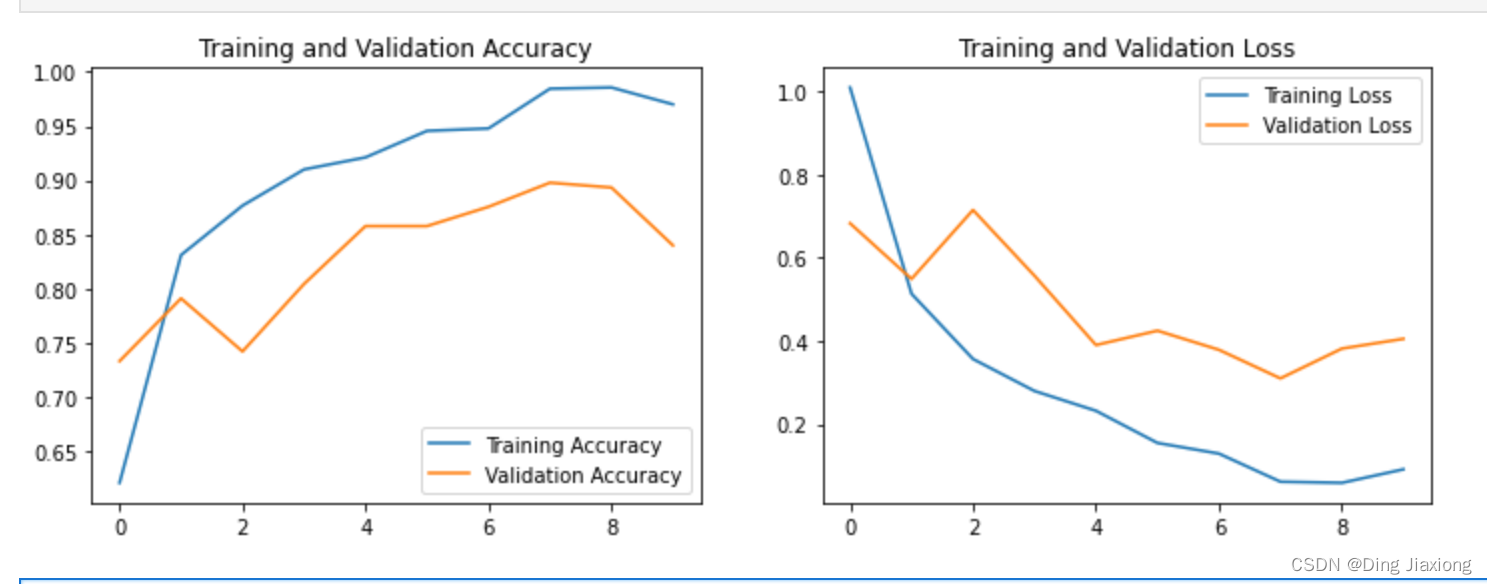
边栏推荐
猜你喜欢
随机推荐
Win7C盘不能扩大怎么办?Win7C盘扩展卷不能点怎么解决
物体颜色的来源
iMeta | Baidu certification is completed, search "iMeta" directly to the publisher's homepage and submission link
在测试集上训练,还能中CVPR?这篇IEEE批判论文是否合理?
HCIP 第十八天
js文字转语音播报
【COS 加码福利】COS 用户实践有奖征文,等你来投稿!
HCIP 交换实验
无代码平台多行文字入门教程
Libtomcrypt AES 加密及解密
matlab练习程序(多线段交点)
ThreadLocal详细分析
pyvista 的介绍与使用
暴力破解ssh/rdp/mysql/smb服务
Win11系统重装用什么好 一键重装Win11教程
mae,mse,rmse分别利用sklearn和numpy实现
[代码阅读] CycleGAN: Unpaired Image-To-Image Translation Using Cycle-Consistent Adversarial Networks
超宽带UWB实时精准定位,短距离无缝交互应用,物联网厘米级精度方案
iMeta | 德国国家肿瘤中心顾祖光发表复杂热图(ComplexHeatmap)可视化方法
被Win11安全中心误删除的文件怎么恢复?
